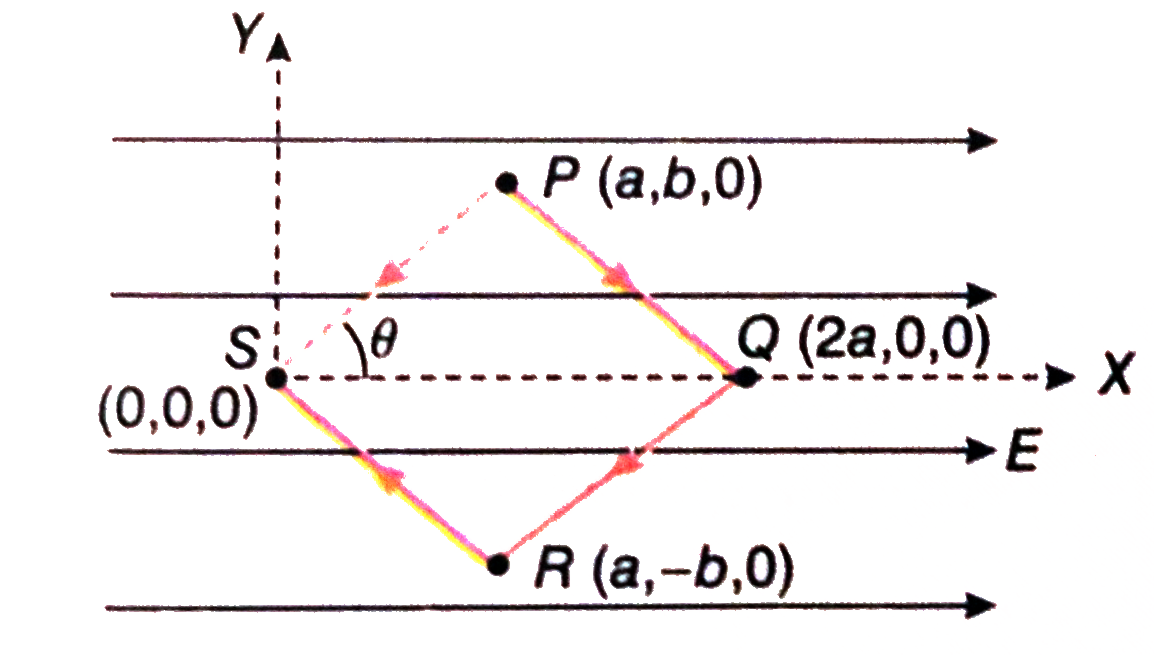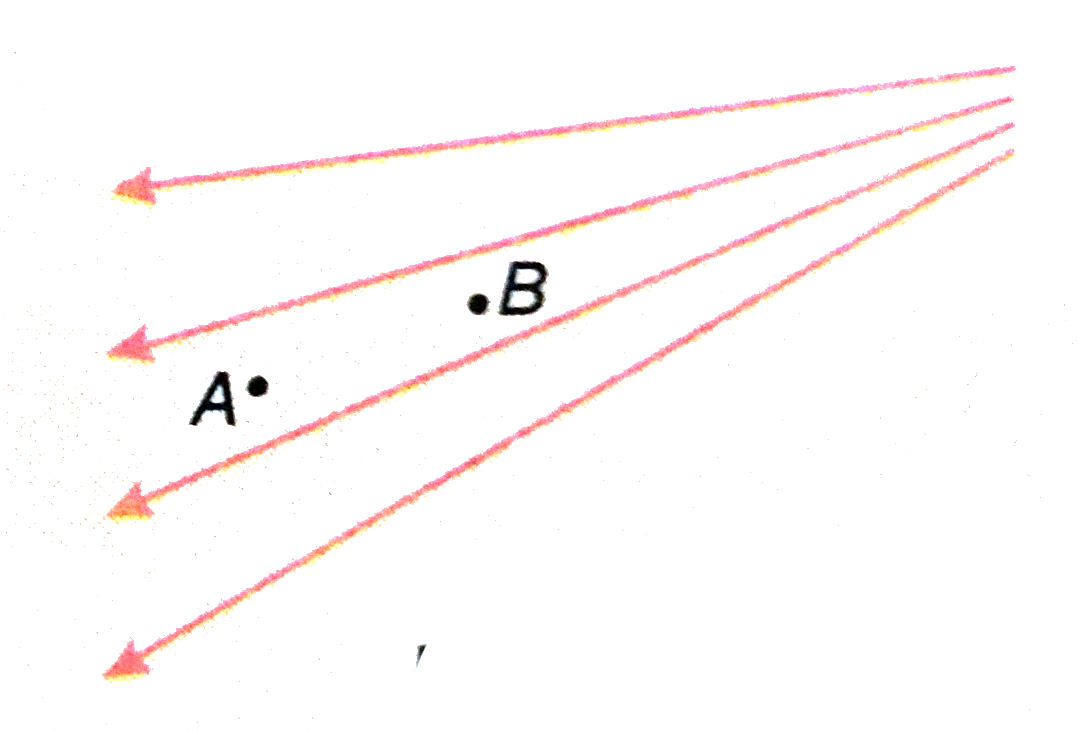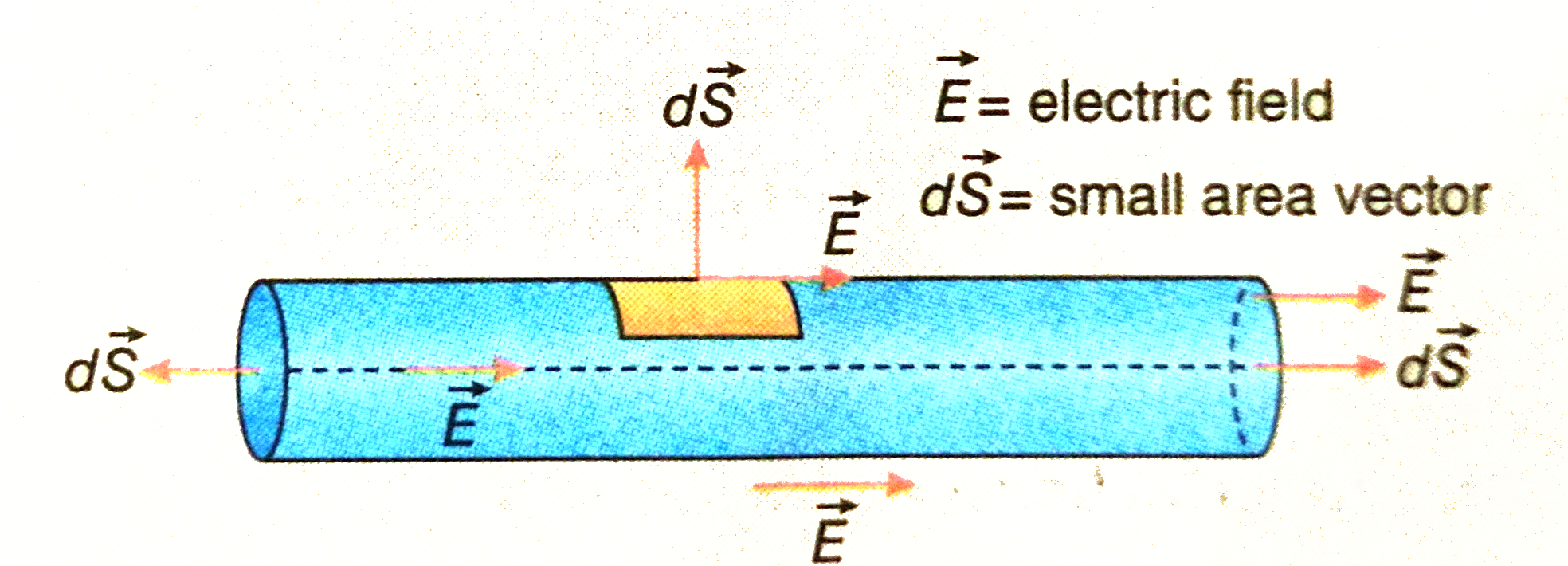Complete Solutions to HIGHER ORDER THINKING SKILL QUESTIONS of chapter ELECTRIC FIELD of Class 12 book with complete answers and questions
| Class 12 | PHYSICS |
| Chapter | ELECTRIC FIELD |
| CHHAYA PRAKASHINI | HIGHER ORDER THINKING SKILL QUESTIONS |
| Number Of Questions | 33 |
| Academic Year | 2023-24 |
Two charges, ` + q and -q ` are separated by a distance d. At which points will the resultant electric field intensity be directed parallel to the line joining the charges ?
View SolutionTwo point charges are separated by a certain distance. Electric field intensity is zero at a point in between the two charges. What can we conclude about the charges ?
View SolutionA ring of radius R carries a uniformly distributed charge ` + Q. ` A point charge ` - q ` is placed on the axis of the ring at a distance ` 2R ` from its centre and than released. Will the charge -q execute a simple harmonic motion along the axis of the ring ?
View SolutionTwo small balls have equal posltive charges Q (coulomb). They are suspended by two insultating strings of equal length L (metre) from a hook flxed to a stand. The whole set up is taken to a satelllte in space where there is no gravity (state of welghtlessness). Calculate the angle between the two strings and tension in each string in newton.
View SolutionA charge q is placed at the mid-point of the line joining two equal charges Q. For what value of q will the system of the three charges be in equlllbrium?
View SolutionTwo equal negative charges -q are fixed at points (0,a) and (0,-a) on the Y-axis. A positive charge Q is released from rest at the point (2a,0) on the X-axis. Will the charge Q execute simple harmonic motion?
View SolutionA piont charge q moves from point P to point S along the path PQRS [Fig.2.73] in a unlform electric field E pointing parallel to the positive X-axis. The coordinates of P, Q, R and S are (a,b,0), (2a, 0, 0), (a,-b,0) and (0,0,0) respectively. Determine the work done by the field in the above process.

View SolutionThe presence of matter alters the net force acting between two charges. Explain.
View SolutionWhat is the difference between the electrical effects due to a point charge at rest and that in motion?
View SolutionWhat is the significance of Gauss' theorem? Is it applicable to any other fields other than electric field?
View SolutionCan a field line start from a charged conductor and end on it? Answer with reason.
View SolutionTwo lines of force in an electric field never intersect each other. Why?
View SolutionAn electric dipole is placed in a uniform electric field in such a way that its axis lies along the electric field. Does any force or torque act on the dipole?
View SolutionAn electric dipole is placed in a uniform electric field in with its axis inclined at a certain angle with the field. Does any force or torque act on the dipole?
View SolutionWhat should be the angle of a field line with the normal to a surface so that flux linked with the surface becomes maximum?
View SolutionIf an electric dipole is placed in a non-uniform electric field, does any torque or force act on the dipole?
View SolutionEight electric dipoles each with charge e are placed inside a cube. What should be the total electric flux linked with the cube?
View SolutionA cylinder is lying with axis parallel to uniform electric field `vecE`. What is the total flux through the cylinder with cross-section S and length L ?
View SolutionAn electric dipole is situated in a uniform electric field `vecE` such that its moment `vecp` is aligned in the direction of the field. Is the equilibrium of the dipole stable or unstable? If `vecp` and `vecE` are in opposite directions, what will be the nature of the equilibrium?
View SolutionThe electric field due to a small dipole of length 2l at distance `r ( rgtgtl)` from the centre of the dipole on the axial line is E. What is the distance of the point on the perpendicular bisector of the dipole from its centre in which the electric field intensity is E ?
View SolutionA particle of mass m is attached to one end of missless rigid non-conducting rod of length `l`. Another particle of the same mass is attached to the other end of the rod. Two particles carry charges +q and -q . This arrangement is held in the region of uniform electric field E such that the rod makes and angle `theta (lt 5^(@))` with the field direction. Find an expression for the minimum time that is needed for the rod to become parallel to the field after it is set free.
View SolutionA uniform non-conducting rod of mass m and length `l` has linear charge densities `+lambda` and `-lambda` on its two halves, as shown in the figure. It is hinged at its midpoint, so that it can rotate freely about the mid-point in a uniform electric field E parallel to X-axis. The rod is rotated by a small angle `theta(lt 4^(@))` and released. Calculate the time period of small oscillations of the rod.
View SolutionTwo infinitely large sheets having charge densities `sigma_(1)` and `sigma_(2)` respectively `(sigma_(1) gt sigma_(2))` are placed near each other separated by distance d . A charge q is placed in between two plates such that therefore is no effect on charge distribution on plates. Now this charge is moved at an angle of `45^(@)` with the horizontal towards plate having charge density `sigma_(2)` by distance a `(a lt d)`. Find the work done by electric field in the process.

View SolutionA small charge is placed at a point in a static electric field. Will the charge move along the electric line of force passing through that point?
View SolutionTwo point charges `e_(1)` and `e_(2)` are separated by a distance `d` but the electric field is not `0` on any point joining the two points. What can be concluded from this?
View SolutionForce between two charges depends on the presence of the material between them - explain.
View SolutionCharge Q is distributed between two paraticles. What should be the value of charges on the particles so that the repulsive force acting between them is maximum?
View SolutionA free electron and a free proton are placed in an uniform electric field. Compare their acceleration and the force acting on them. [Rest mass of electron `=9.1xx10^(-31)kg` and rest mass of proton `=1.67xx10^(-27kg`]
View SolutionWhy electric fields just outside the surface of a conductor is perpendicular to the surface?
View SolutionIn case of field outside a uniformly charged sphere, the charge can be assumed to be concentrated at the centre at the sphere . How can you prove it.
View SolutionHow the force acting between two charges will change if the air medium betweeen them is replaced by metalic plate?
View SolutionIf a positively charged particle is kept at the points A and B in an electric field shown in Fig. , then at which point the particle will feel more force and why ?

View SolutionIf the area of cross section of the cylinder is S , then what will be the electric flux through the cylinder?

View Solution
HIGHER ORDER THINKING SKILL QUESTIONS questions and complete solutions for chapter ELECTRIC FIELD of CHHAYA PHYSICS (BENGALI ENGLISH) of Class 12
All Exercises from CHHAYA PRAKASHINI Class 12 PHYSICS ELECTRIC FIELD
- CBSE SCANNER
- ENTRACNCE CORNER ( COMPREHENSION TYPE )
- ENTRACNCE CORNER ( INTEGER ANSWER TYPE )
- ENTRACNCE CORNER (ASSERTION-REASON TYPE )
- ENTRACNCE CORNER (MULTIPLE CORRECT ANSWER TYPE )
- EXAMINATION ARCHIVE ( AIPMT)
- EXAMINATION ARCHIVE ( JEE MAIN )
- EXAMINATION ARCHIVE ( NEET )
- EXAMINATION ARCHIVE (WBCHSE)
- EXAMINATION ARCHIVE (WBJEE)
- EXERCISE ( HOTS NUMERICAL PROBLEMS )
- EXERCISE ( MULTIPLE CHOICE QUESTION )
- EXERCISE ( VERY SHORT ANSWER TYPE QUESTIONS )
- EXERCISE (PROBLEM SET -I)
- EXERCISE (PROBLEM SET -II)
- EXERCISE (SHORT ANSWER TYPE QUESTIONS-I )
- EXERCISE (SHORT ANSWER TYPE QUESTIONS-II )
- HIGHER ORDER THINKING SKILL QUESTIONS
- NCERT EXEMPLAR QUESTIONS WITH ANSWER HINT
- NCERT TEXTBOOK QUESTIONS WITH ANSWER HINT
- NUMERICAL EXAMPLES
- SECTION RELATION QUESTIONS